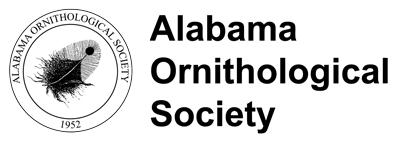An unusual nest site for Prothonotary Warbler (Protonotaria citrea) in Central Alabama
In Alabama the Prothonotary Warbler (Protonotaria citrea) is a locally common to abundant breeder inhabiting seasonally flooded bottomland hardwood forests, wooded swamps, and riparian corridors along rivers and streams (Imhof 1976, Petit 1999). Prothonotary Warblers are unique in that they are the only eastern North American warblers that require cavities for nesting. Typical nest sites include natural cavities in dead snags, holes in branches of live trees, or abandoned nest holes of woodpeckers and chickadees (Bent 1953, Petit 1999). Many forms of artificial cavities (e.g., nest boxes, milk cartons, pails, jars, coat pockets, structures on active river ferries, etc.) are also readily used (Bent 1953, Lee and Clark 1985, Dunn and Garrett 1997, Petit 1999). Prothonotary Warblers have even been reported to use open cup nests of other bird species (Conway 1946, Petit and Petit 1988). Other than the typical use of woodpecker and chickadee nest holes, reports of interspecific nest use by Prothonotary Warblers are limited.
Author: Eric C. Soehren
Volume Number: 47 Year Published: 2001
Issue Number: 2
Page Number: 50
Link to article: http://birdlife.aosbirds.org/2001/Vol 47 No 2 2001_50-51.pdf
Link to the full issue of BirdLife: http://birdlife.aosbirds.org/2001/Vol 47 No 2 2001.pdf

